Cherimoya, also spelled chirimoya and called chirimuya by the Inca people, is an edible fruit bearing species of the genus Annona from the family Annonaceae. It’s generally thought to be native to Colombia, Ecuador, Peru and Bolivia, although it’s spreading through cultivation to the Andes and Central America. Take a look below for 25 more fun and interesting facts about cherimoya.
1. Mark Twain called the cherimoya, “the most delicious fruit known to men.”
2. The creamy texture of the flesh gives the fruit its secondary name, custard apple.
3. Cherimoya is a fairly dense, fast-growing, woody, briefly deciduous but mostly evergreen low branches, spreading tree or shrub that’s 5 meters, or 16 feet, to 9 meters, or 30 feet, tall.
4. They are egg-shaped, globe-shaped or heart-shaped with an unusually velvety, thin skin that is light green in color.
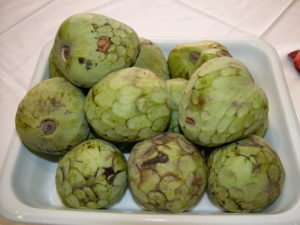
5. The white pulp of the cherimoya offers a mild flavor likened to a blend of banana, vanilla, mango, papaya, pineapple and coconut.
6. The flesh of the cherimoya is studded with large, black, inedible seeds. Some varieties, though not all, produce scaly depressions on their skin, where the more depressions that develop will indicate a seedier fruit.
7. The name originates from the Quechua word “chirimuya,” which means “cold seeds,” because the plant grows at high altitudes and the seeds will germinate at higher altitudes.
8. In the Mediterranean region, it’s cultivated mainly in southern Spain and Portugal, where it was introduced between 1751 and 1797, from where it was carried to Italy, but now can also be found in several countries of Africa, the Middle East and Oceania.
9. Cherimoya is an ideal fruit for those wanting to control their appetite, since it has a filling effect, is nutritious and protein rich.
10. Fino de Jete is a variety of cherimoya that comes from Malaga and Granada, in Southern Spain. It has been awarded the European PDO status.
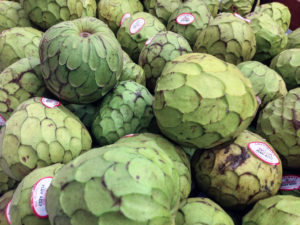
11. Michelin starred and multi awarded Andalusian chef Dani Garcia is a cherimoya fan. He claimed that its appealing characteristics and touch of sourness make it a perfect ingredient for use in sweet and savory recipes.
12. Cherimoya flowers are aromatic and in Jamaica, they’re used as snuff.
13. Like avocados, cherimoya can take a long time to ripen but once ripe, it quickly deteriorates.
14. Cherimoya flowers are hermaphroditic and have a mechanism to avoid self-pollination. The short-lived flowers open as female, then progress to a later, male stage in a matter of hours.
15. The Moche culture of Peru had a fascination with agriculture and represented fruits and vegetables in their art. Cherimoyas were often depicted in their ceramics.
16. Cherimoya is high in calories with 300 grams of the fruit having about 170 calories.
17. It’s high in fiber and is a good source of vitamin C and calcium. It also contains niacin and phosphorus.
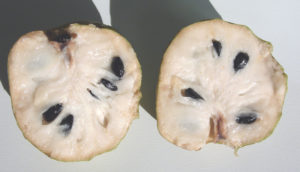
18. Some scientific studies have demonstrated that cherimoya can help with depression, stress and melancholy. However, many people in Mexico have known that and applied it in their home for centuries.
19. California is the biggest producer of cherimoya in the United States.
20. The flesh of the cherimoya contains numerous hard, inedible, brown or black, bean-like, glossy seeds, 1 centimeter, or 0.39 inch, to 2 centimeter, or 0.79 inch, long and about half as wife. Cherimoya seeds are poisonous if crushed open.
21. An extract of the cherimoya bark can induce paralysis if injected.
22. Like other members of the family Annonaceae, the seeds contain small amounts of neurotoxic acetogenins, such as annonacin, which appear to be linked to atypical Parkinsonism in Guadeloupe.
23. In Central and South America, the cherimoya trees grow wild in tropical highlands of the Andes Mountains, where they thrive in the mild summer and cool nights.
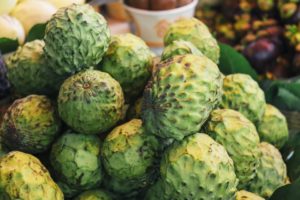
24. In Reggio Calabria and its coastal area, located on the toe of the Italian boot, cherimoya has been grown since 1797, and it has even obtained the De.Co. Italian label of municipal origin.
25. Cherimoya is cultivated throughout the Americas, including Hawaii since 1790 and California where it was introduced in 1871.

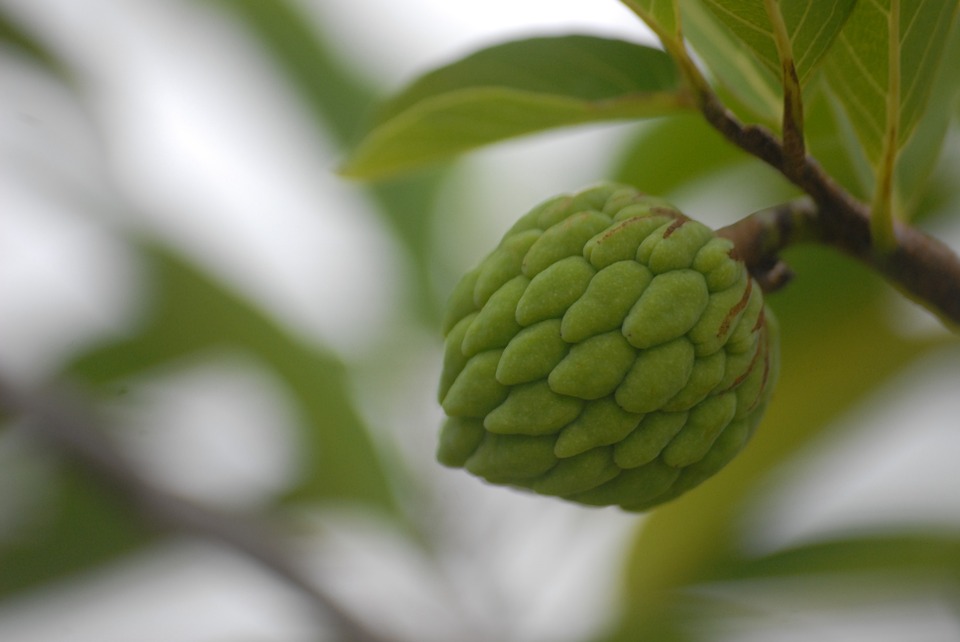



One Comment
Pingback:
March 15, 2018 at 11:32 am